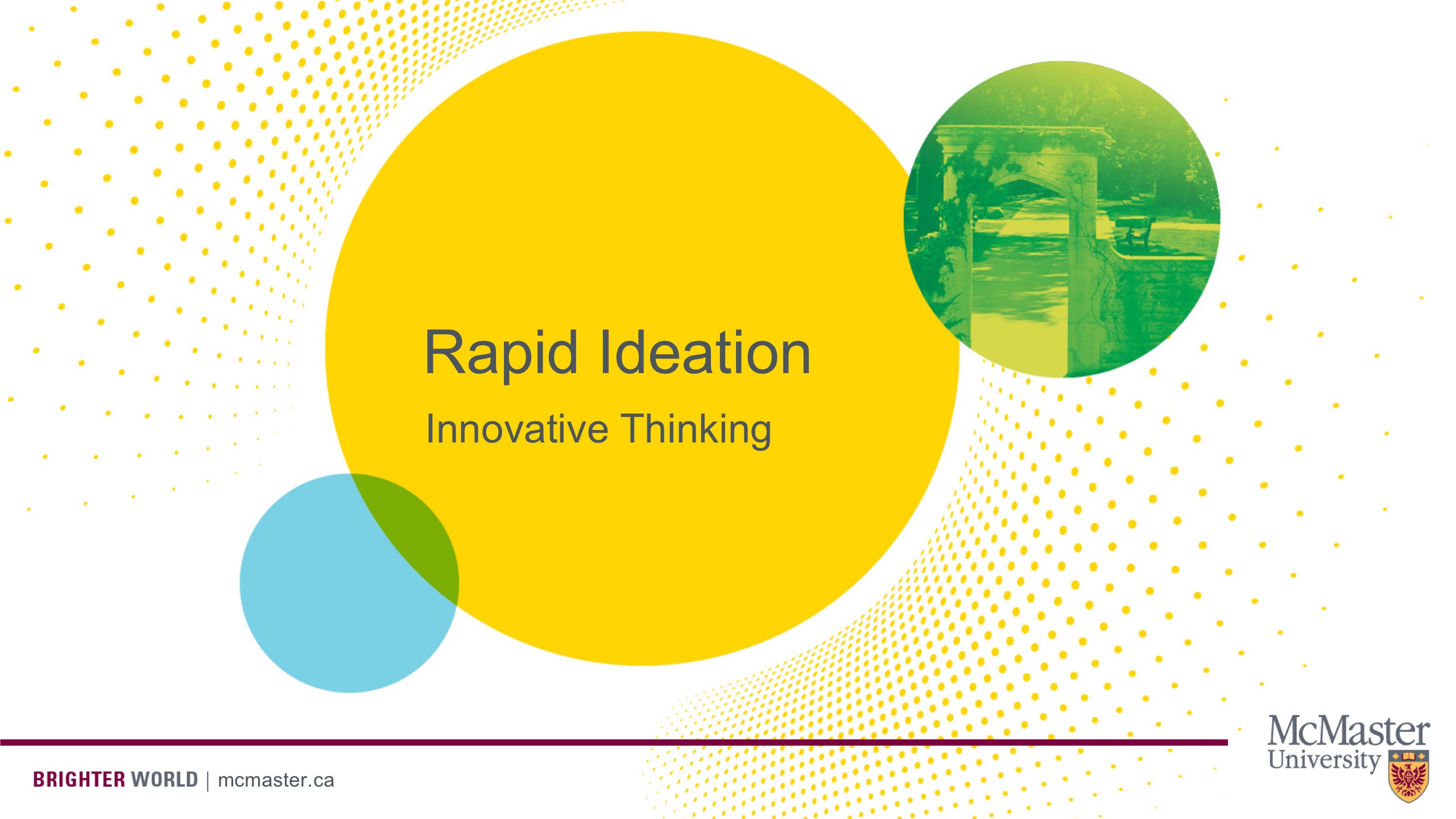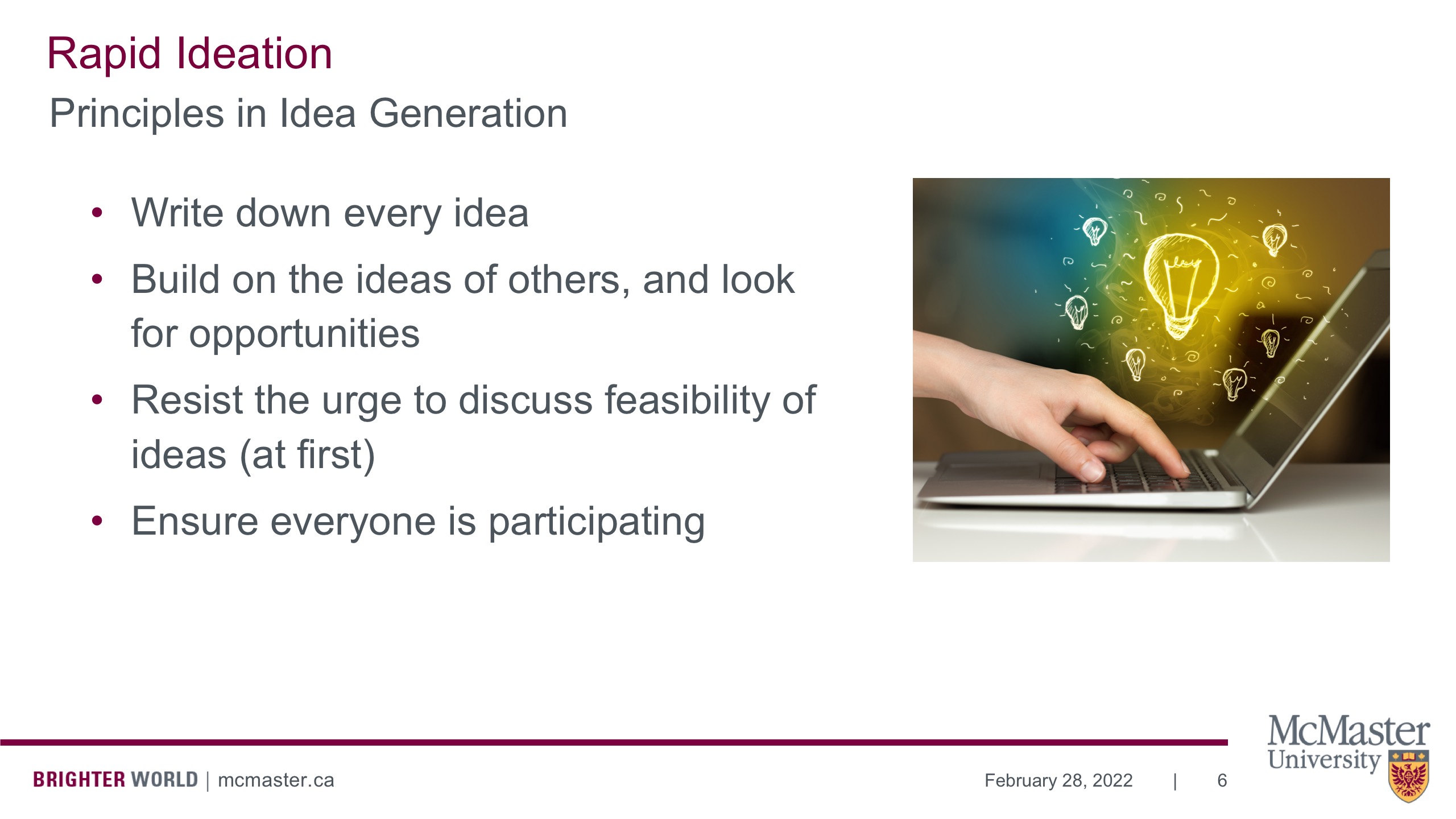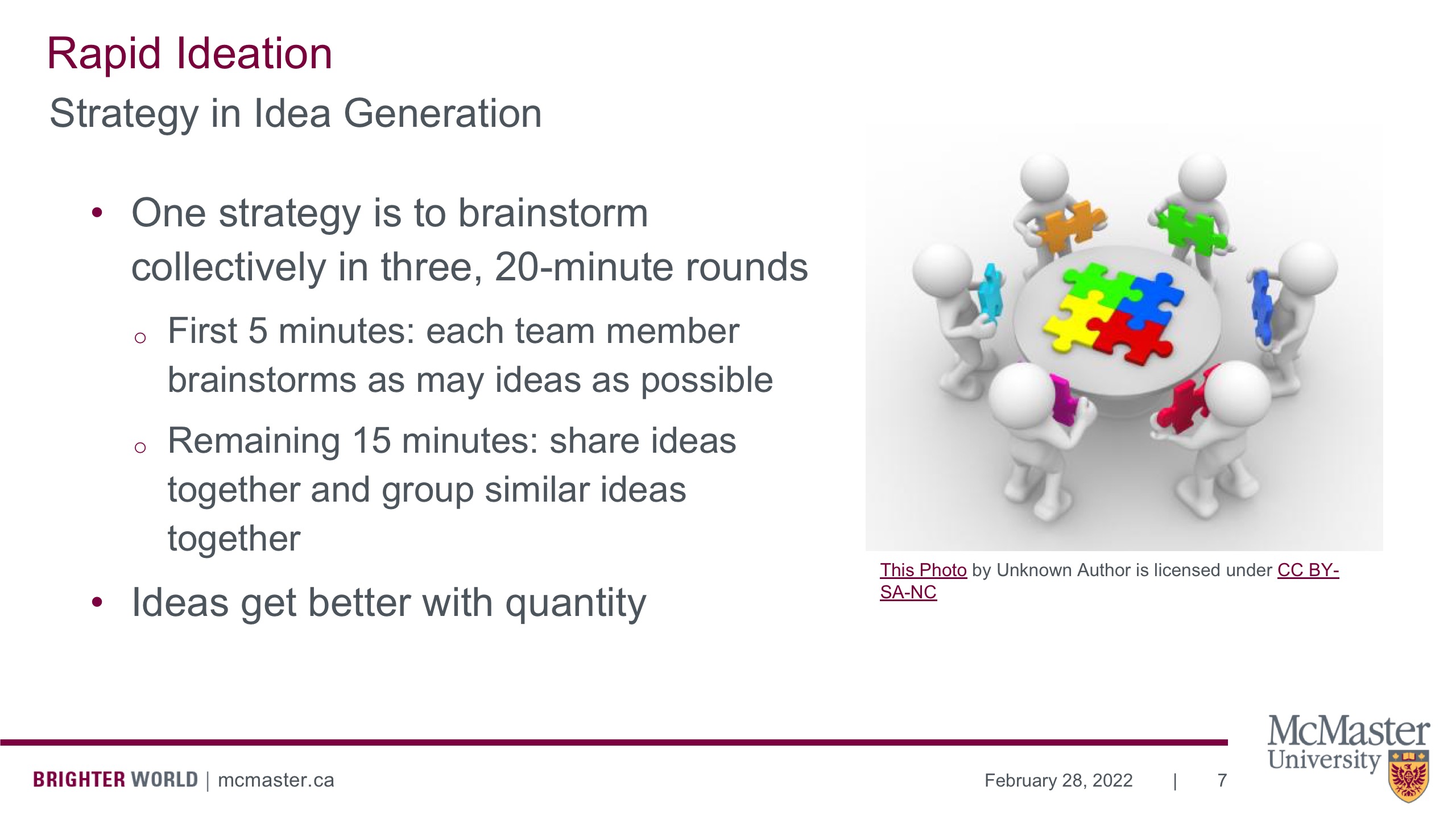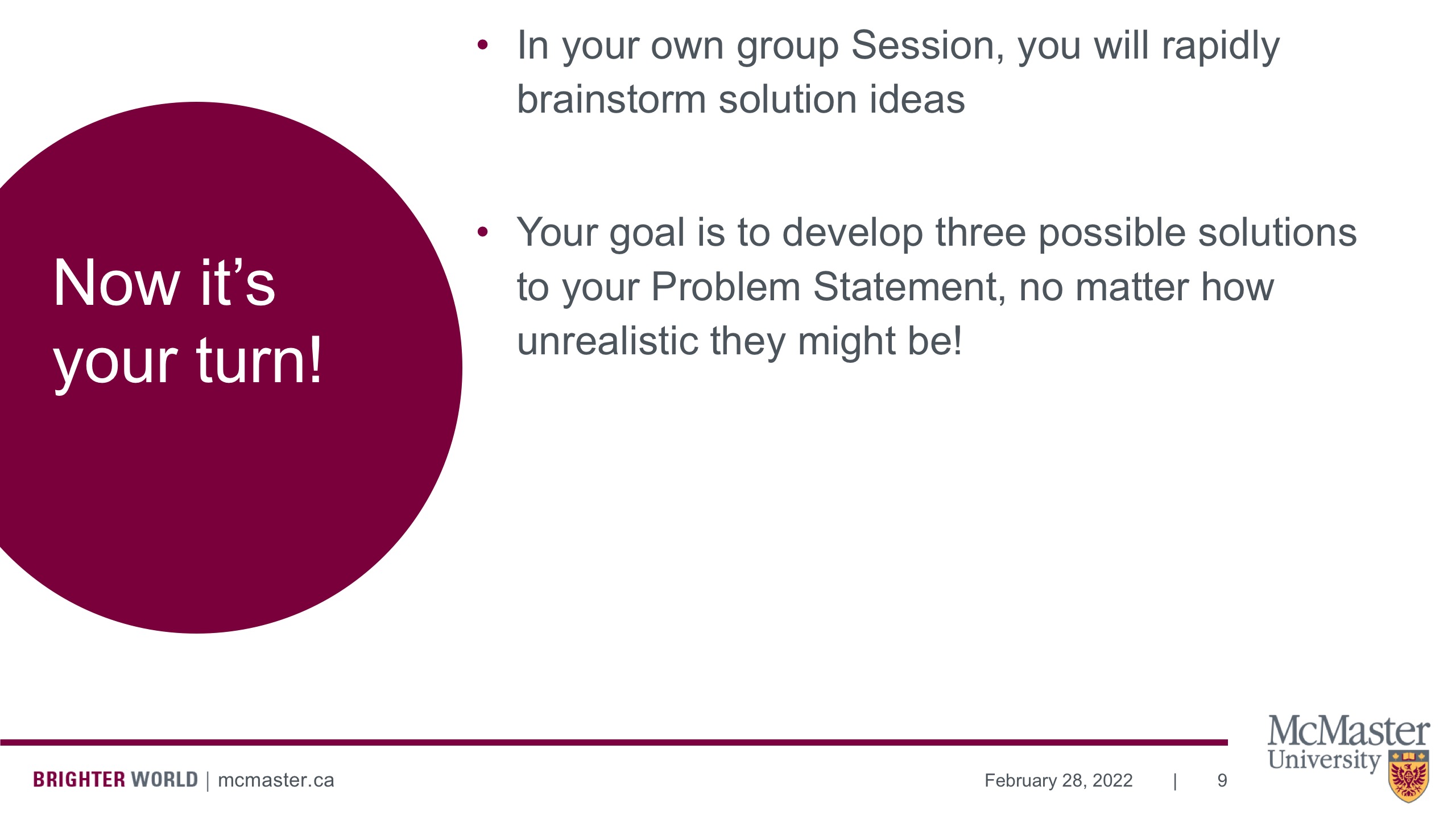13 Module 6 – Rapid Ideation

Hello and welcome to this module titled Rapid Ideation: Innovative Thinking. By the end of this module you should be better equipped to help answer the question of: “how might we start thinking of solutions?”

I want to start by sharing the story titled The Honeypot by Alain Camper. Back in the 80s, a power company named PP was having trouble with snow building up on their power lines. If too much snow builds up on the power lines, they have a risk of tearing or collapsing. After seeing a black bear near one of their towers, they joked about using honey to get bears to climb the towers and shake off the snow.

They further explored this idea and talked about using helicopters to place pots of money at the top of the towers to lure the bears. Jokes aside, they then realized that the downward force of a helicopter would likely be enough to quickly clear snow from the power lines. This method of using a helicopter to clear snow from power lines is used by people to this day. Notice that it all started with this absurd story of using bears to clear snow!

What can we learn from The Honeypot? The lesson here is not that if you think hard enough about a bad idea, it will become good, but that innovative ideas come from where you may least expect them. Sometimes it’s perfectly okay to start with bizarre and infeasible ideas during the brainstorming process because those ideas lead to innovative thinking.


One idea generation strategy is to brainstorm collectively in three 20 minute rounds. The first five minutes of each round is dedicated to each member individually brainstorming as many ideas as possible on their own. They don’t have to be great ideas, but just the first things that come to mind. Write down as many ideas as you have. For the remaining 15 minutes of that 20 minute round, you will to share the ideas together and group similar ideas. Once you do this over three rounds, you’ll notice that the ideas tend to get better as you start to collectively realize that you know where you’re going as a group with these ideas. This is just one strategy. You don’t have to use it, but it worth trying!

At the end of the session, you will have to narrow down your brainstorming to your three top ideas. Some things to consider when choosing your best ideas include: What advantages does your solution offer? If there are existing solutions, then what is yours offering that the others don’t? What makes it unique? What is it doing that others can’t do? What benefits does your solution offer the public? Why would the public want this? Finally, can this solution be implemented widely? The more areas, or situations, or contexts that you can apply a solution, the better that solution is.

References
Camper, E. (1993). The Honey Pot
A Lesson in Creativity & Diversity. https://www.insulators.info/articles/ppl.htm
Innovation Champions. (n.d) Rapid Ideation. https://innovationchampions.com.au/toolkit/rapid-ideation

